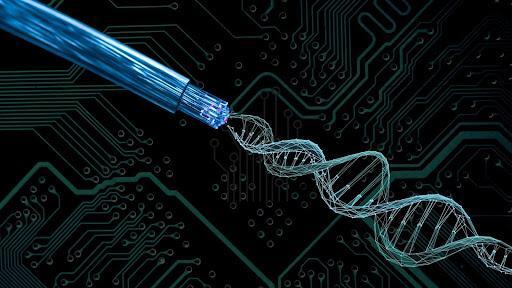
Title: DNA’s Electron Flow May Unlock Future Biocompatible Electronics
The human body is made up of approximately 37.2 trillion cells, each containing a unique molecule called DNA. While DNA is primarily known for its role in storing genetic information, researchers have long been fascinated by its electrical properties. Recently, scientists have made a groundbreaking discovery that could revolutionize the field of electronics: DNA’s electron flow may unlock future biocompatible electronics.
A team of researchers from the University of California, Berkeley, led by Dr. Hyuck Choo, have been studying the interactions between electrons and molecular vibrations, or phonons, in DNA strands. Their findings, published in the journal Nature Communications, reveal that these interactions create novel pathways for electron transport, paving the way for the development of smaller, more efficient, and biocompatible devices.
Traditionally, electronics have relied on silicon-based materials, which have limitations in terms of scaling and energy efficiency. As devices continue to shrink, the need for new materials and technologies that can keep pace with this miniaturization has become increasingly pressing. DNA’s unique electron-vibration dynamics offer a promising solution.
The researchers’ study began with a thorough examination of the electrical properties of DNA. They used a combination of theoretical modeling and experimental techniques to investigate how electrons move through DNA strands. By analyzing the interactions between electrons and phonons, they discovered that these vibrations create a “phonon-mediated” electron transport mechanism.
In this mechanism, electrons move through the DNA strand by hopping from one molecule to another, facilitated by the vibrations of the molecule. This process is akin to a “dance” between the electrons and phonons, where the vibrations create a pathway for the electrons to flow.
The significance of this discovery cannot be overstated. DNA’s electron-vibration dynamics offer a number of advantages over traditional electronics. For one, DNA is inherently biocompatible, meaning it can be integrated with living tissues without causing harm. This property opens up new possibilities for the development of implantable devices, such as pacemakers or prosthetic limbs.
Additionally, DNA’s unique electron transport mechanism allows for the creation of devices that are smaller and more efficient than their silicon-based counterparts. This is because DNA molecules are incredibly thin, measuring just 2 nanometers in diameter, making them ideal for the development of miniaturized devices.
The researchers’ findings have far-reaching implications for the field of electronics. They suggest that DNA could be used as a building block for the development of novel electronic devices, such as biosensors, biofuel cells, and even DNA-based logic gates.
In a statement, Dr. Hyuck Choo emphasized the potential of DNA-based electronics, saying, “Our study demonstrates the feasibility of using DNA as a platform for developing biocompatible electronic devices. This has significant implications for the development of implantable devices, biosensors, and other applications where biocompatibility is crucial.”
The potential applications of DNA-based electronics are vast and varied. For example, DNA-based biosensors could be used to detect diseases in real-time, allowing for early intervention and treatment. DNA-based biofuel cells could provide a sustainable source of power for implantable devices, eliminating the need for batteries.
While the development of DNA-based electronics is still in its early stages, the potential for breakthroughs is immense. As researchers continue to explore the electrical properties of DNA, we can expect to see the development of new devices and technologies that will revolutionize the field of electronics.
In conclusion, the discovery of DNA’s electron flow and its potential applications in biocompatible electronics is a major breakthrough. The unique electron-vibration dynamics of DNA offer a promising solution for the development of smaller, more efficient, and biocompatible devices. As researchers continue to explore the potential of DNA-based electronics, we can expect to see the development of new technologies that will change the face of the electronics industry.






